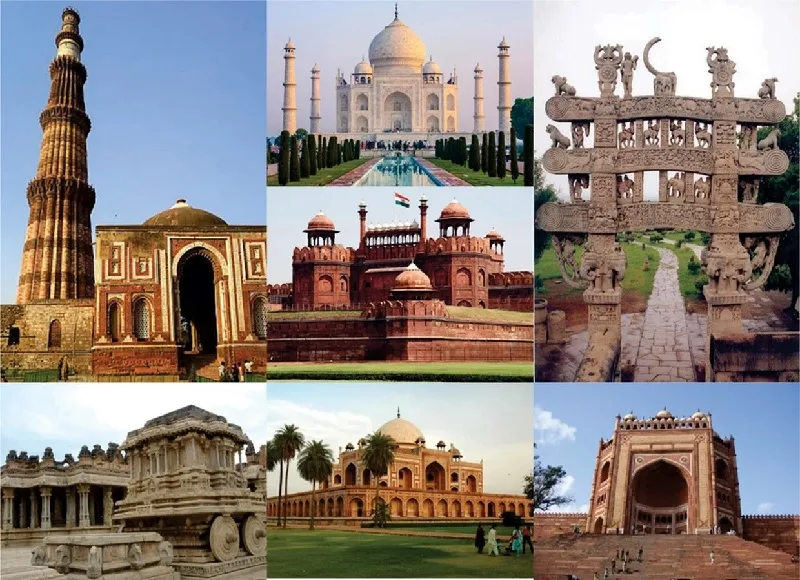
How Can You Protect a Monument? A Complete Guide to Safeguarding Our Heritage
Monuments are tales of records, shooting the essence of civilizations, traditions, and cultural milestones. Whether it’s the Taj Mahal in India, the Colosseum in Rome, or the Statue of Liberty in the USA, these landmarks characterize our shared past. But over the years, they face threats like pollutants, vandalism, urbanization, and climate change.
So, how can you defend a monument? It’s now not most effective for the authorities’ activity — individuals, groups, and groups also play a widespread function. This article offers a comprehensive manual on shielding monuments and preserving them for future generations.
Why Are Monuments Important?
1. Cultural Identity
Monuments bring deep ancient and cultural meanings. They help human beings live connected with their roots and traditions.
2. Educational Value
They provide gaining knowledge of opportunities about architecture, historic civilizations, political moves, and societal modifications.
3. Tourism and Economy
Historic websites appeal to vacationers globally, contributing to local and country wide economies.
What Are the Major Threats to Monuments?
| Threat | Impact |
| Air Pollution | Deteriorates stone surfaces and paint |
| Vandalism | Graffiti, defacing, and damage to property |
| Urbanization | Construction activities may harm structural integrity |
| Neglect | Lack of maintenance leads to decay |
| Climate Change | Rainfall, humidity, and heat cause erosion and corrosion |
| Over-tourism | Foot traffic damages flooring, walls, and delicate areas |
How Can You Protect a Monument?
Let’s have a look at diverse strategies and movements which could defend our monuments:
1. Raise Public Awareness
Educating the public approximately the importance of monuments is essential. This includes:
- Organizing background walks
- Conducting workshops and faculty journeys
- Sharing testimonies thru social media and blogs
Awareness results in appreciation, and appreciation results in protection.
2. Legislation and Legal Protection
Many countries have laws to protect ancient sites. For instance:
- UNESCO World Heritage Sites
- The Ancient Monuments and Archaeological Sites Act (India)
- The National Historic Preservation Act (USA)
These legal guidelines modify preservation, ownership, and restrictions on creation.
3. Restoration and Conservation
Professionals along with archaeologists and conservation architects use strategies to:
- Clean, repair, and repair systems
- Replace decayed substances with unique textures
- Strengthen structural weaknesses
Example: The Humayun’s Tomb in Delhi was restored with the usage of lime plastering and traditional Mughal methods.
4. Controlled Tourism
Tourism is useful but must be regulated:
- Limit the range of site visitors in keeping with day
- Use audio courses as opposed to strolling tours to lessen crowds
- Provide special paths and walkways
5. Community Involvement
Involving neighborhood communities can substantially decorate monument safety:
- Training locals as background guards
- Encouraging community tracking
- Offering incentives for network-led maintenance efforts
6. Cleanliness and Sanitation
Monuments regularly suffer due to:
- Littering
- Spitting
- Urination in corners
Installing dustbins, signboards, and making sure clean surroundings prevents harm and promotes hygiene.
7. Use of Technology
- 3-d scanning to create virtual replicas
- Drones for far flung inspection and monitoring
- Geo-fencing for restricting get right of entry to to touchy zones
Technology additionally aids in documenting information for future generations.
Case Studies of Monument Protection
1. The Taj Mahal (India)
- Regular cleansing the usage of multani mitti (Fuller’s earth) to get rid of pollutants stains
- Ban on polluting vehicles inside 500 meters
- Tourism caps for the duration of peak seasons
2. The Colosseum (Italy)
- Ongoing structural reinforcement
- Visitor pathways restricted to lessen wear
- Massive funding for conservation from personal groups
3. Machu Picchu (Peru)
- Strict access policies (timed slots, guided excursions)
- Limited every day footfall
- Preservation of nearby plant life and fauna
Tips for Individuals to Protect Monuments
| Action | Impact |
| Do not litter | Keeps the site clean and attractive |
| Avoid graffiti or name carvings | Preserves historical beauty |
| Respect signs and barriers | Prevents structural damage |
| Use eco-friendly transport | Reduces carbon footprint around the site |
| Educate others | Spreads awareness and encourages collective action |
Role of Schools and Colleges
1. Include Heritage Education
Textbooks must cover subjects on nearby monuments and their significance.
2. Field Trips
Real-life visits help students connect emotionally with historical locations.
3. Competitions and Debates
Encouraging college students to participate in poster-making, essay writing, and debates instills pride and obligation.
Government and NGO Initiatives
1. INTACH (Indian National Trust for Art and Cultural Heritage)
- Works for conservation and public awareness
- Provides training for monument caretakers
2. ASI (Archaeological Survey of India)
- Maintains over 3600 monuments
- Conducts maintenance and maintains authenticity
3. Adopt a Monument Scheme
- Allows private/public entities to undertake and maintain monuments
- Promotes public-private partnerships
Future of Monument Protection
To make sure monuments remain preserved:
- Invest in technology and professional manpower
- Encourage international partnerships for knowledge exchange
- Include sustainability as a middle precept in conservation policies
Conclusion
Monuments aren’t just structures of stone, they are the soul of a nation’s background. Protecting them ensures that destiny generations enjoy the identical experience of surprise and pride. Whether you’re a student, tourist, nearby resident, or government, frame your role in maintaining records subjects. Start small but assume big, because even the smallest act of protection is going an extended manner in maintaining our monuments alive.
Summary
Protecting monuments is critical to retaining our cultural, historic, and architectural legacy. This article explains powerful ways to protect monuments, from governmental initiatives to community involvement. Learn how focus, legislation, restoration, and accountable tourism make contributions to monument conservation. Let’s discover how you can assist shop those irreplaceable treasures.
Frequently Asked Questions (FAQs)
1. Why is it vital to defend monuments?
Monuments maintain cultural historical past, educate destiny generations, and aid tourism. Protecting them sustains countrywide identification and monetary benefits.
2. What is the most important risk to monuments?
The largest threats consist of pollution, vandalism, forgetfulness, and out of control tourism which step by step damage the shape and historic elements.
3. How can college students defend monuments?
Students can help by means of collaborating in consciousness campaigns, reporting vandalism, and selling cleanliness and recognition for the duration of visits.
4. Can technology honestly assist in monument safety?
Yes. Technologies like 3-d scanning, laser mapping, and AI surveillance improve recovery, monitoring, and making plans.
5. What is the authorities’ position in defensive monuments?
Governments enforce legislation, fund restoration tasks, and promote history tourism to make certain monuments are conserved effectively.







